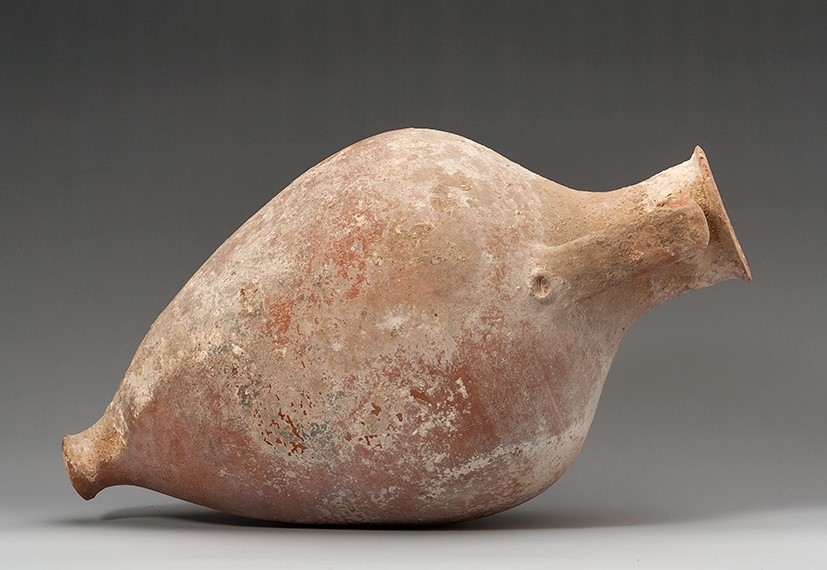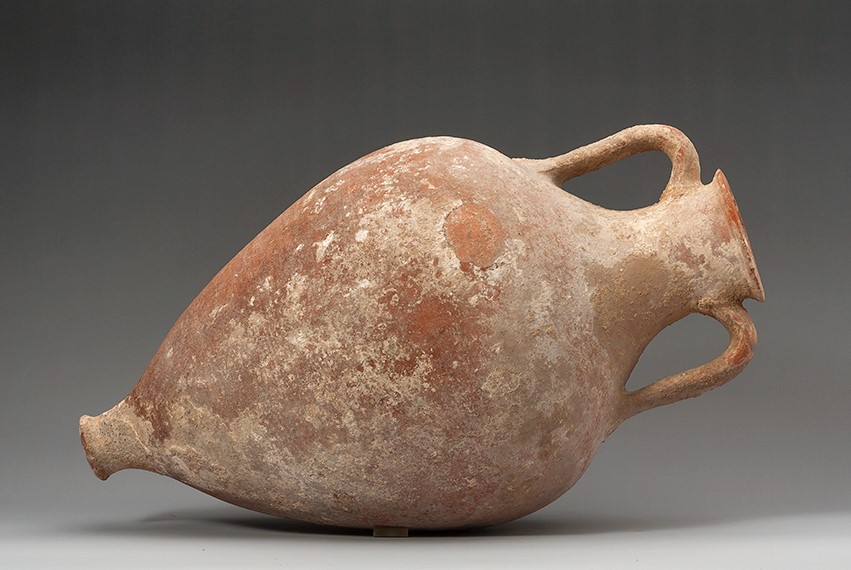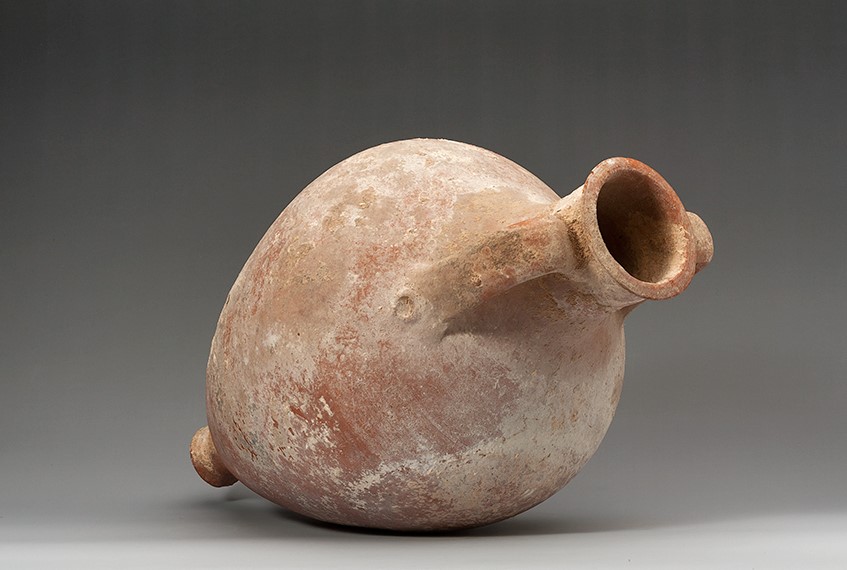Acquisition number: 1973.29
Apart from a break towards the base which has been rejoined, the vase is intact. Smoothly finished orange-red clay; some incrustation on the surface. The amphora has a slightly knobbed base, simple out-turned lip and vertical handles with depressions at their bases.
Title: Amphora - 1973.29
Acquisition number: 1973.29
Author or editor: J.R. Green
Culture or period: Greek (Rhodian?) or Cypriot.
Date: Later 5th century BC.
Material: Clay - Terracotta
Object type: Vessels - Amphora
Dimensions: 603mm (h)
Origin region or location: Greece
Origin city: Possibly Rhodes, or Cyprus.
Display case or on loan: 3
Keywords: Greek, Rhodian, Cypriot
Sotheby (London), Sale Cat., 30 April 1973, no. 176 (ill.); J.R. Green with B. Rawson, Catalogue of Antiquities in the Australian National University, A.N.U. (Canberra, 1981) 76.
1973.29
Amphora
Purchased. Ht 60.3cm.
Apart from a break towards the base which has been rejoined, the vase is intact. Smoothly finished orange-red clay; some incrustation on the surface. The amphora has a slightly knobbed base, simple out-turned lip and vertical handles with depressions at their bases.
The amphora seems to be Greek (Rhodian?) or Cypriot of the fifth century BC. Compare those illustrated in Hesperia 3, 1934, 202 fig. 1, 2; Clara Rhodos iii, 1930, 286 tomb CLXV (the amphora on pl. VIII; context of the early fifth century); Swedish Cyprus Expedition IV, 2, 89-90, fig. 63, and 307; Opuscula Atheniensia 3, 1960, 121 fig. 16, 2 and 5. Ours may belong in the later part of the fifth century.
For an excellent introduction and general discussion, see V. Grace, Amphoras and the Ancient Wine Trade. Note also A.W. Johnston, “The Development of Amphora Shapes, Symposium and Shipping”, in: Ancient Greek and Related Pottery (Amsterdam 1985) 208-211. For a recent general discussion of amphorae, their trade and manufacture and more especially their identification by compositional analysis, see I.K. Whitbread, Greek Transport Amphorae (Fitch Laboratory Occasional Paper 4, London 1995). The book also has a good bibliography.
Sotheby (London), Sale Cat., 30 April 1973, no. 176 (ill.); J.R. Green with B. Rawson, Catalogue of Antiquities in the Australian National University, A.N.U. (Canberra, 1981) 76.


